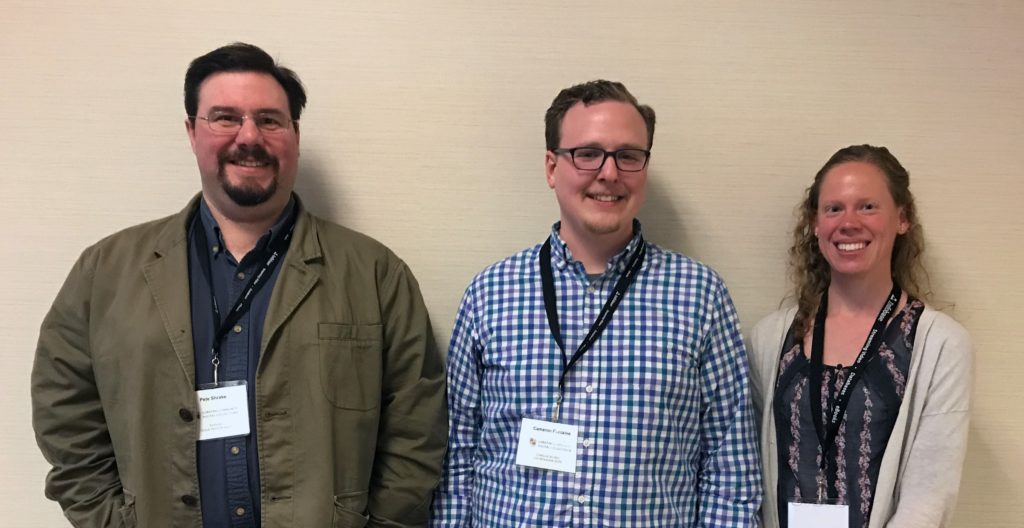My name is Cameron Fontaine and I am a UW-Milwaukee MLIS student working with the Manitowoc County Historical Society through the CCDC program. The Manitowoc County Historical Society is a gorgeous site comprised of historic buildings and artifacts which serve as a sort of living museum, the Pinecrest Historical Village. They host scores of school children through school trips and different programs throughout the year for a truly unique educational experience. In addition to this, they are a repository for several collections of historic photographs, film negatives, and documents. That’s where I come in.
The collection I am working with is an extensive collection of film negatives from Manitowoc photographer Daryl Cornick. Cornick had a variety of interests and the subjects of these photographs range from nautical photos to pictures of the Green Bay Packers from the 50s and 60s. The collection consists of 3038 film negatives which have been digitized already by the historical society’s volunteer staff. Most often when I tell people this, their reaction is “Oh, well if they’ve been digitized already, then what more do you need to do with them?” The answer to that question is always something that amounts to “Quite a bit more actually.”
One of the most common misconceptions about the world of digitization and digital collections is that once something is digitized it is permanently preserved in some sort of secure cyber safe. There seems to be a notion that digitization is the end all be all of digital preservation, but in reality digital preservation only begins with digitization. After digitization there has to be an effort to maintain the collection’s integrity and to provide consistent access to the collection.
With the Cornick project specifically we are looking to create a template for all future digitization projects at the historical society. Most notably, they are about to tackle another massive project approximately 100 times bigger than the Cornick collection. It is our hope that the work we do this summer will yield sufficient documentation to make that project go smoothly and make sure that a standard of digital preservation is maintained.
Documentation is an extremely important part of any digital preservation effort. Good documentation can save a lot of headaches especially when you’re dealing with a staff of 1.5 plus volunteers. The Manitowoc County Historical Society presents a unique situation, because they are a private not for profit institution that represents their county. As such they rely sole on the efforts of two individuals, one working part time and the other full time, and a crew of volunteers with varying degrees of tech literacy. This is why we are concentrating our efforts on reorganizing the Cornick collection and creating documentation for every step of the process. It is our hope that going forward no matter who is working on digitization at the Manitowoc County Historical Society they can follow the documentation that we lay out and all future efforts will be to the same standards which were outlined at the CCDC workshop in May.
–Posted by Cameron Fontaine

Curating Community Digital Collections is supported by a grant from the Institute of Museum and Library Services, #RE-85-17-0127-17. Meet all of the students in the 2018 CCDC cohort here.




You must be logged in to post a comment.